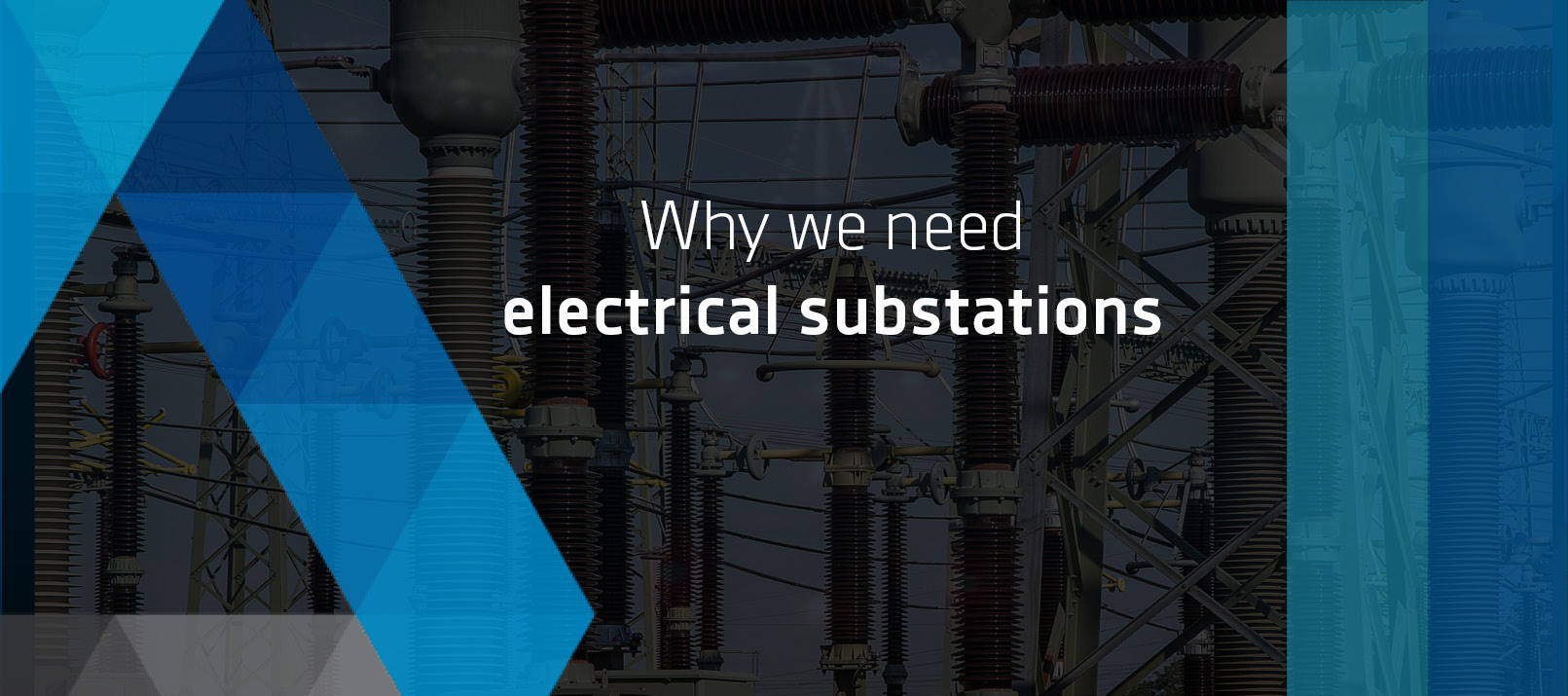Why we need electrical substations

How to transport electricity efficiently
Our modern world is a world of performance and efficiency. This applies not only to sports or business life, but also to our power supply system. It would be a waste of resources and money if we did not try to get electricity from the power plant to the consumer with the lowest possible losses.
The simplest way to minimize losses in power transmission is to increase the electrical voltage. The higher the voltage in a power line, the fewer losses you have to cope with. But here we encounter a problem: High voltage is difficult to handle and at the same time dangerous. Household appliances therefore usually operate with only a few volts.
In order to meet these circumstances, voltage levels have been introduced in our supply system. Power lines that run across vast distances operate at high voltages (high-voltage lines). Power lines that run directly to individual households, however, are low-voltage lines. So-called electrical substations convert the voltage from high to low. These are often located in the immediate vicinity of cities or towns. This keeps losses as low as possible.
Structure of electrical substations
Depending on their design, substations can be up to several hectares in size. This is necessary because high voltages are present there. In this context, air serves as a natural and, above all, cheap source of insulation between the individual components. Smaller substations can also be built indoors, i.e. under roof. This prolongs the service life since weather influences have no impact.
The heart of the substation are the transformers. Transformers, also called voltage converters, are responsible for converting high voltage into low voltage. Transformers are also present in our cell phone or laptop power supply units. There they are a few centimeters in size. The transformers in substations can, however, be as large as passenger cars. This is due to the high voltage they have to convert.
In order to ensure the safety and stability of the power supply system, there are also other components in a transformer station. These include. for example, lightning conductors, switches and fuses.

Electrical substation
Substations and their environmental footprints
Substations are essential in a modern and efficient power grid. But no progress comes without drawbacks. One such drawback is noise pollution, which usually manifests itself in the form of a low hum. The metal cores built into the transformer, cause this hum. They are themselves stimulated to oscillate by the alternating current, which leads to noise. Another possible disadvantage is the exposure of the environment to electric or magnetic fields.
Additional caution is required inside a transformer station. Electrical shocks can occur when people touch components of the substation. Therefore, the contact voltage and the grounding resistance are also important safety factors.
But do not worry! Owners of substations must comply with the limiting values for the above-mentioned factors. The limit values themselves usually remain well below the values at which a danger to people and the environment is to be expected. Nevertheless, it is regularly necessary to check quantities such as contact voltage, noise exposure and electromagnetic exposure.
We help you to measure the difference
DEWETRON’s measuring instruments suite ideally for checking parameters in electrical substations. Due to their compact design with integrated display, the DEWE3-A4 or also the new PU[REC] can be used on the go. By using our OXYGEN software it is also possible to evaluate the data directly on your DEWETRON device. For example, you can determine the frequency of the hum of a transformer by means of FFT (fast fourier transform).

Low-frequency noise can easily spread over long distance, while high-frequency noise usually vanishes after short distances. This is a good indicator of noise exposure to the environment. By means of our modular system it is also possible for you to expand your measurement system up to 2000 channels. This allows, for example, the simultaneous measurement of the electromagnetic load and current/voltage in the transformer. Our highly qualified current transducers additionally facilitate this measurement process.
Do you have any further questions about our products? Then please contact us via our contact form. Do you want to expand your knowledge about measurement technology? Then visit our website. There you can find video tutorials, whitepapers and more. You can also find us on YouTube or LinkedIn. Finally, our monthly newsletter is the best way to stay informed about the latest trends.





